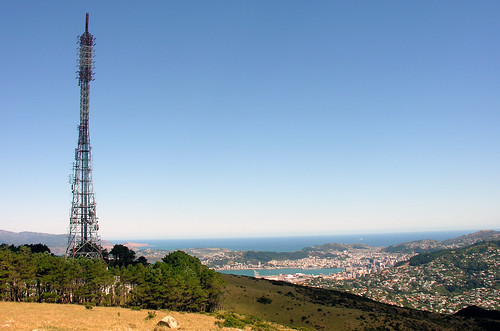
Kaukau transmitter by Phillpc @ Flickr (CC Licence)
Autumn is the conference season in Europe, and I’ve had a busy couple of months talking about DAB Digital Radio and meeting my colleagues from the digital radio industry around the world. A particular highlight was the conference “Quo Vadis Digital Radio”, which was held in Ingolstadt (near Munich in Germany) and organised by the BLM (Bayrische Landeszentrale für neue Medien / Bayern New Media Centre). Germany has had a very difficult relationship with DAB, mainly because of enthusiasm to build substantial networks that was never matched by the broadcasters’ enthusiasm to use them.
I wanted to use the opportunity to explain how the UK’s extended lead in DAB uptake means that we’re uncovering issues and problems earlier than other countries. Whilst it’s right to remind people that DAB can be successful, it’s far more valuable to explain what we would have done differently with the benefit of hindsight. We can see back down a road other countries are about to start travelling along, so it seems only fair to tell them where the axle-breaking potholes are.
There’s a copy of my presentation (German / English) to read, but the area I felt was most radical was to question how we’d rolled out Digital Radio in the UK, whether or not it was representing a good investment for radio companies.
To briefly recap; the incentive for many stations to migrate to digital was the promise of an uncontested analogue licence renewal. In order to allow each station to have this renewal, the digital radio licence areas were carved up to fit existing analogue licence areas.
However a number of other factors conspired to create a situation where the greatest danger to the success of DAB in the UK at the moment comes from the network itself.
Firstly, the coverage areas were ambitiously planned to fit together using only 5 frequencies, which is incredibly demanding reuse. In some places two multiplexes using the same frequency have official coverage areas just 10-20 miles apart. Secondly, the digital areas were shaped to fit existing analogue coverage, which is achieved from single high-power transmitters. Matching that shape in digital is far more complicated.
The third issue, in my mind, is the most concerning. Commercial Radio has never been responsible for planning or implementing its own transmission. Since the days of ILR, transmission was outsourced – first to the IBA, and then onto its privatised successor, ntl: / Arqiva. There are very few people in commercial radio who have a deep knowledge of radio planning, mast building, transmitter commissioning and so on. We rely heavily on a commercial company (and now about to become a monopoly) to provide this essential service. Whilst the costs for establishing FM were well established, most people in the radio industry were trusting on guidance from Arqiva to give a true picture of DAB transmission costs. If you offer a hungry dog meat……
It’s becoming clear (particularly as radio suffers from an advertising recession) that the cost of our networks is out of kilter to the coverage breadth and quality that they achieve, and out of kilter with where demand for Digital Radio listening is. Trying to fix that problem looks a bit like unscrambling eggs.
Some of our network cost is inflated because the coverage requirements are unrealistically demanding. We probably shouldn’t have been promising 70%-80% coverage on day one, and The Radio Authority should probably have been more realistic with frequency reuse so that we could have fewer, higher power transmitters. Those things can be resolved, probably by changing digital coverage areas, amalgamating multiplexes and rejigging frequency use.
But undeniably some of our network cost is inflated because there was a chance to have a technology party at which somebody else was picking up the bar bill. And now the radio companies are nursing a hangover and an overdraft, and it’s not very funny. One of the benefits of consolidation in the radio industry is that the commercial operators are now getting big enough and confident enough to retake control of more of the technology, and make sure more of the money goes on achieving good quality coverage for listeners, and investment in development of digital radio services.
So my messages to my colleagues in other countries who are just starting off down the bumpy path of DAB is to be restrained in network builds, and question in detail where the money is going. Most of the components of a DAB network are the same as an FM network, so why should they cost any different? Network cost is going to consume a lot of your digital investment, and a lot of your profit for a good while yet, so squeeze every cent out of it, and do exactly what’s required to make DAB grow reliably; maybe with smaller initial coverage, but better quality and at lower costs.
In the meanwhile, DAB will continue to grow and evolve in the UK, but hopefully it will do so faster and in more interesting ways now that the broadcasters have realised the value of being more in control of their transmissions.